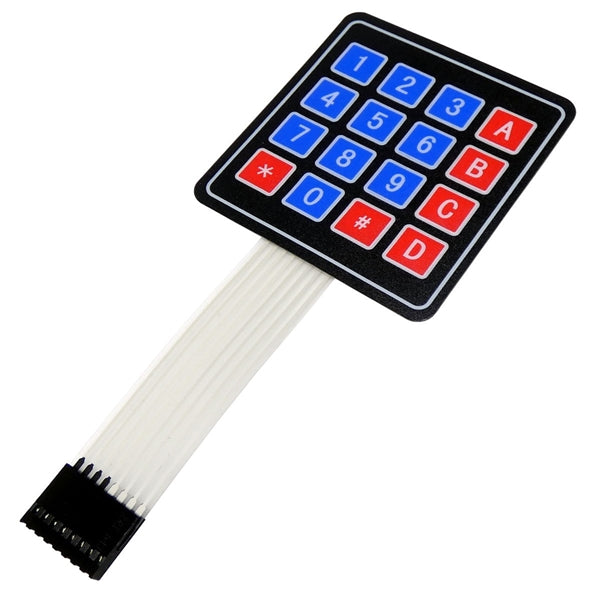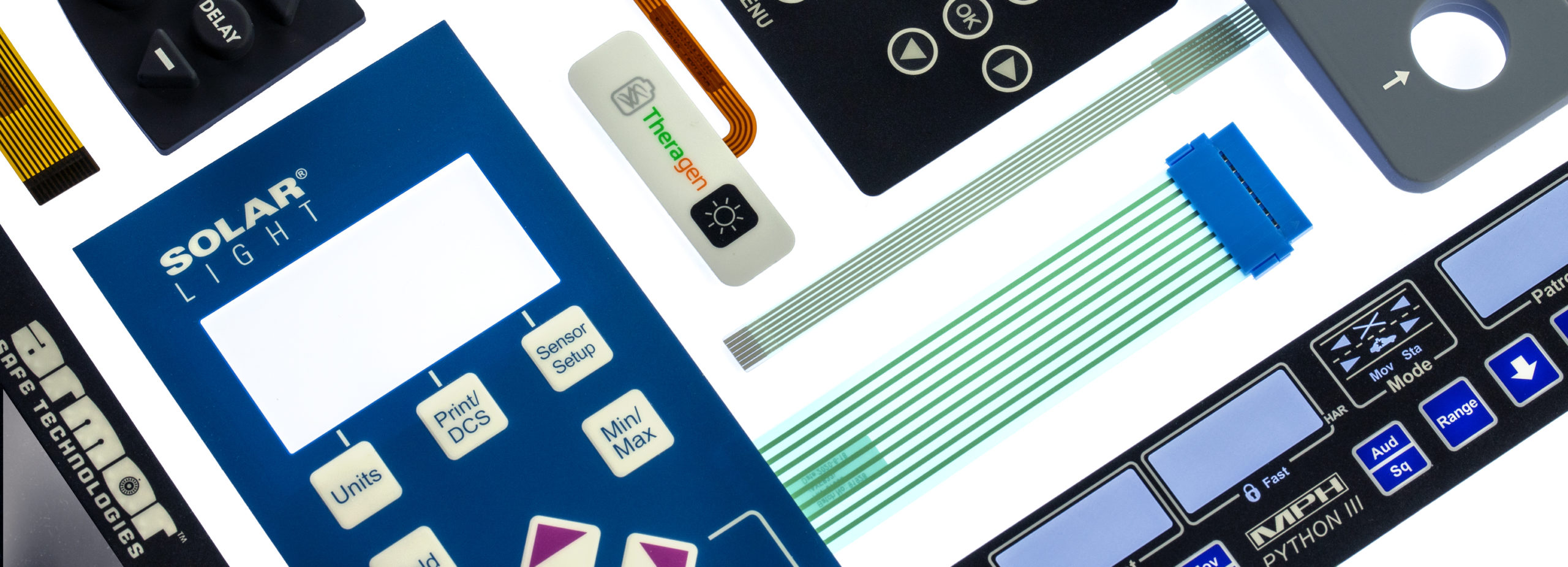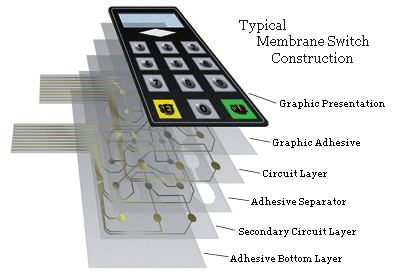Everything About Membrane Layer Switch Over: Comprehending Its Style and Performance
When you think concerning the control user interfaces in modern tools, membrane layer switches commonly come to mind. Let's discover what collections membrane changes apart from other control systems.
What Are Membrane Layer Buttons?

Their smooth nature makes them easy to clean and immune to dust and moisture, a crucial feature in many atmospheres. Membrane layer switches can also be personalized regarding shape, size, and graphics, enabling makers to develop one-of-a-kind user interfaces customized to particular items. And also, they're light-weight and slim, which helps in lessening the general mass of tools. In general, membrane buttons play a considerable duty in boosting customer experience throughout a broad array of applications.
Just How Membrane Switches Over Work
When you push a secret on a membrane button, it triggers a simple yet efficient mechanism. membrane switch manufacturer. The top layer, typically made of flexible material, presses down onto a conductive layer under it.
You'll discover that the tactile feedback differs based on the switch style, providing either a soft click or a more pronounced feedback. As soon as you release the trick, the membrane returns to its initial setting, reopening the circuit and stopping the signal. This process takes place almost immediately, guaranteeing a responsive individual experience.
Membrane layer switches are preferred as a result of their toughness and resistance to dirt and dampness, making them optimal for various applications, from household appliances to clinical devices. Comprehending this procedure assists you value their prevalent usage.
Key Components of Membrane Switches
Comprehending the essential parts of membrane switches is essential for understanding their functionality and design. At the core, you'll discover the graphic overlay, which supplies the aesthetic interface for users. Beneath that, there's a spacer layer that divides the circuit layers, ensuring that they do not make get in touch with until pushed. The circuit layer is where the magic happens; it consists of conductive traces that finish the circuit when you press the button. Another vital component is the adhesive backing, enabling the switch to stick to surfaces securely. The safety layer guards versus environmental factors and put on, prolonging the switch's lifespan. Each part plays a substantial role in making sure trustworthy efficiency and individual interaction. By understanding these elements, you'll gain understanding right into exactly how membrane switches operate and their value in various applications.
Products Used in Membrane Layer Change Design
The efficiency and durability of membrane layer switches over heavily rely on the materials made use of in their style. You usually encounter polyester and polycarbonate as main substratums because of their superb stamina and adaptability. These products resist scratches and chemicals, making them perfect for requiring atmospheres.
The conductive layers usually use silver or carbon, picked for their dependability and conductivity. membrane switch manufacturer. Silver provides exceptional efficiency, while carbon is a cost-effective alternative. For the overlay, you might take into consideration a matte or glossy finish, relying on your aesthetic needs and customer experience
Adhesives play an essential role as well; they bond layers securely and guarantee durability. Ensure to select adhesives that endure environmental variables like temperature and moisture. Ultimately, don't neglect the importance of an excellent printing strategy for graphics, as it enhances both performance and aesthetic allure. Choosing the best products will guarantee your membrane button stands the test of time.
Style Factors To Consider for Membrane Buttons
While creating membrane buttons, it's crucial to take into account numerous factors that influence their performance and customer experience. Start by concentrating on the layout and switch size; make particular they're instinctive and easy to navigate.
Verify your layout fits environmental elements, like dampness or temperature level variations, which could impact performance. By thoroughly taking into consideration these elements, you'll develop a membrane layer switch that enhances functionality and satisfaction.
Applications of Membrane Layer Buttons
Membrane switches are flexible components discovered in numerous applications, from industrial tools to customer electronics. You'll see their effect in makers that need resilient user interfaces and in tools that take advantage of sleek designs. Recognizing these applications aids you appreciate the capability and usefulness of membrane buttons in everyday innovation.
Industrial Equipment Usage
When you're wanting to enhance the performance of commercial equipment, membrane switches offer a trustworthy remedy that combines sturdiness with easy to use layout. These switches are ideal for severe settings, giving resistance to dust, moisture, and chemicals. You'll locate them in control panels for producing machines, HVAC systems, and clinical tools, where precision and responsiveness are important. Their low profile suggests they fit perfectly right into different devices, saving beneficial room while preserving simplicity of use. With personalized graphics and backlighting choices, you can create an user-friendly interface for operators, enhancing effectiveness and security. And also, their long lifespan minimizes maintenance expenses, making them a wise financial investment for your industrial applications. Embrace membrane layer buttons to simplify your operations and improve overall performance.
Consumer Electronic Devices Integration
In the domain name of customer electronic devices, membrane buttons play a vital duty in boosting user communication and gadget capability. You'll discover them in gadgets like microwaves, remote controls, and pc gaming consoles, supplying a smooth way to connect with technology. Their sleek design linked here allows for very easy assimilation into various products, making controls intuitive and straightforward. With their ability to integrate graphics and backlighting, you can appreciate a contemporary visual that matches the device's overall look. Membrane buttons likewise assure toughness and resistance to dirt and dampness, expanding the life expectancy of your electronics. By selecting membrane buttons, you improve not just the functionality but also the design of your gadgets, making everyday interactions smooth and enjoyable.
Advantages and Downsides of Membrane Layer Buttons
While membrane switches offer a range of benefits, they additionally come with some disadvantages that you need to consider. One substantial advantage is their compact design, making them excellent for space-constrained applications.

Membrane switches can have a much shorter life-span compared to mechanical buttons, specifically under heavy usage. They can likewise be less responsive, which might influence user responses during operation. Balancing these pros and disadvantages will certainly aid you determine if membrane switches are the best fit for your job.
Often Asked Concerns
The Length Of Time Do Membrane Layer Switches Commonly Last?
Membrane layer switches typically last in between 5 to ten years, relying on usage and ecological conditions. You'll desire to examine factors like wear, exposure to wetness, and temperature changes to gauge their long life properly.
Can Membrane Switches Be Personalized for Specific Layouts?
Yes, you can personalize membrane layer buttons to fit certain layouts (membrane switch manufacturer). You'll have the flexibility to choose colors, shapes, and formats that match your job's demands, ensuring they mix effortlessly with your general aesthetic
What Is the Cost Range for Membrane Layer Change Production?
The additional resources cost variety for membrane switch production typically falls in between $1 and $10 each, relying on variables like layout intricacy, amount, and materials. You can obtain quotes from manufacturers to locate the very best choice.

Are Membrane Layer Changes Water-proof or Resistant?
Membrane switches can be created to be water-proof or immune, relying on materials utilized and building approaches. If you require them for wet settings, assure you specify those requirements throughout the design procedure.
Exactly How Do Membrane Layer Changes Contrast to Typical Switches?
Membrane switches are generally thinner and more flexible than typical switches, providing a sleek design. They're often simpler to weblink clean and incorporate, yet might not offer the responsive comments you're utilized to with mechanical choices.
Final thought
